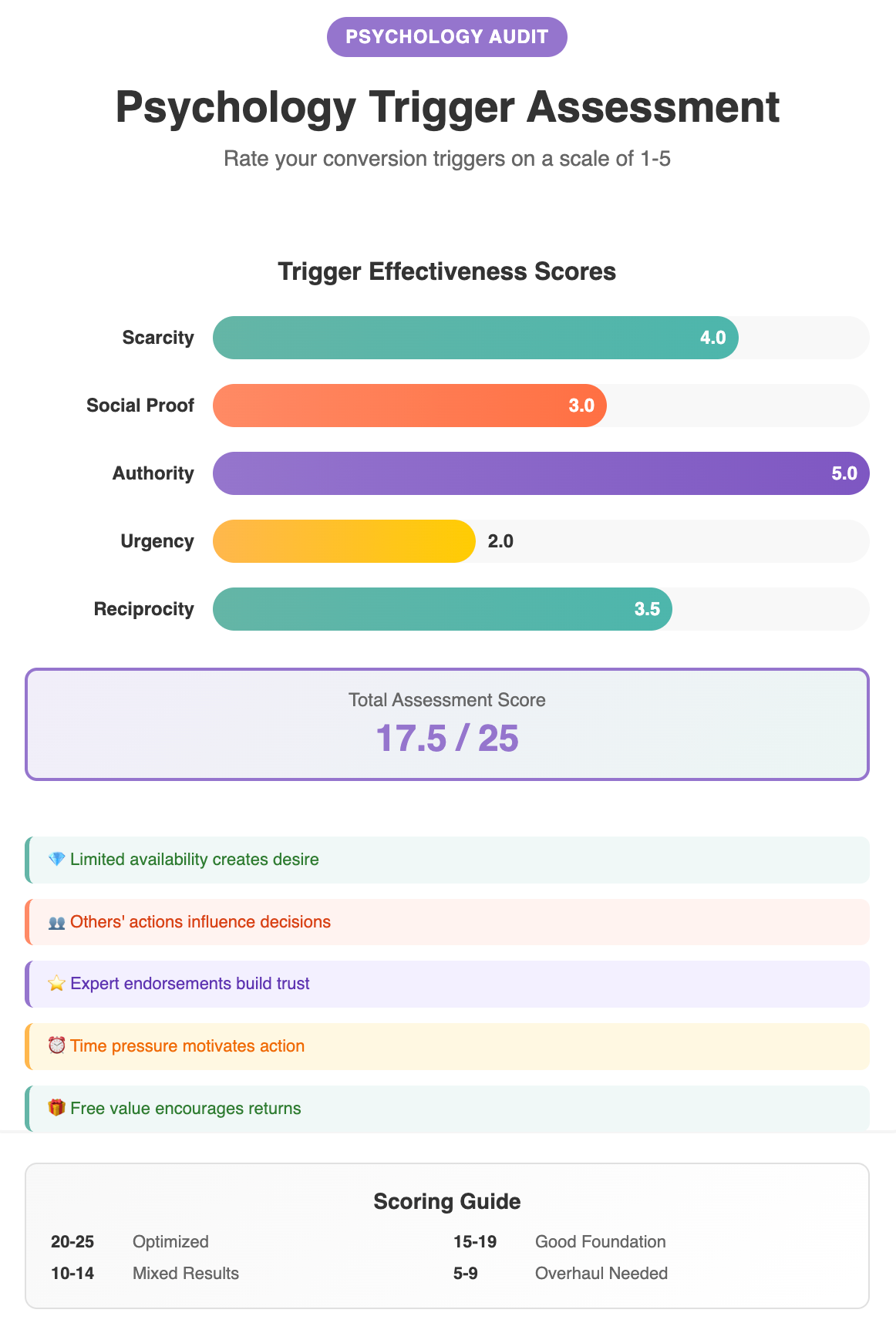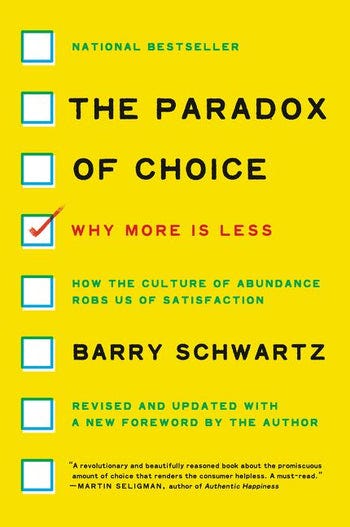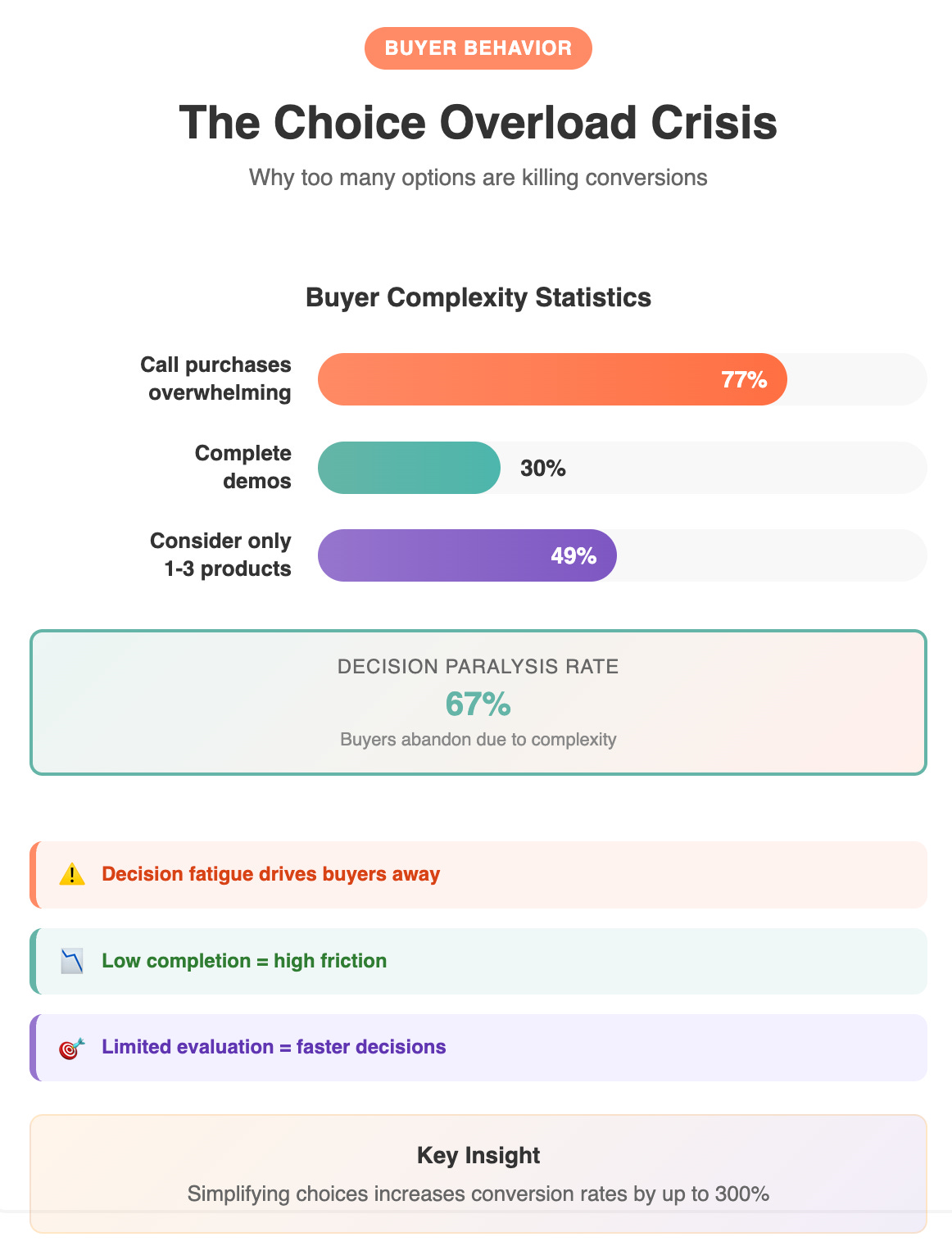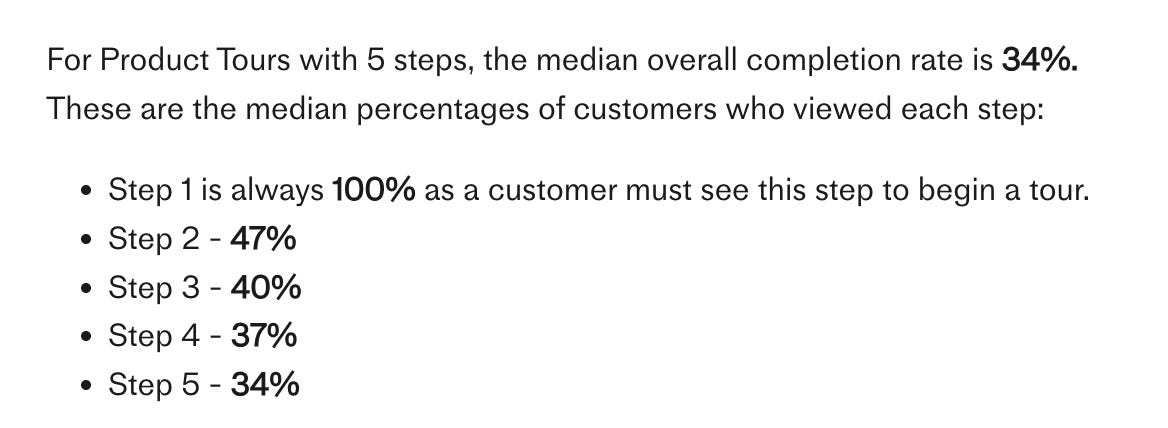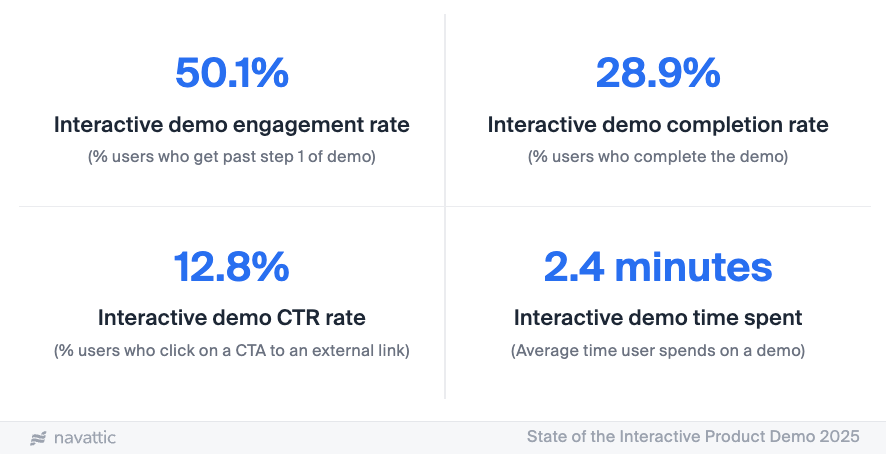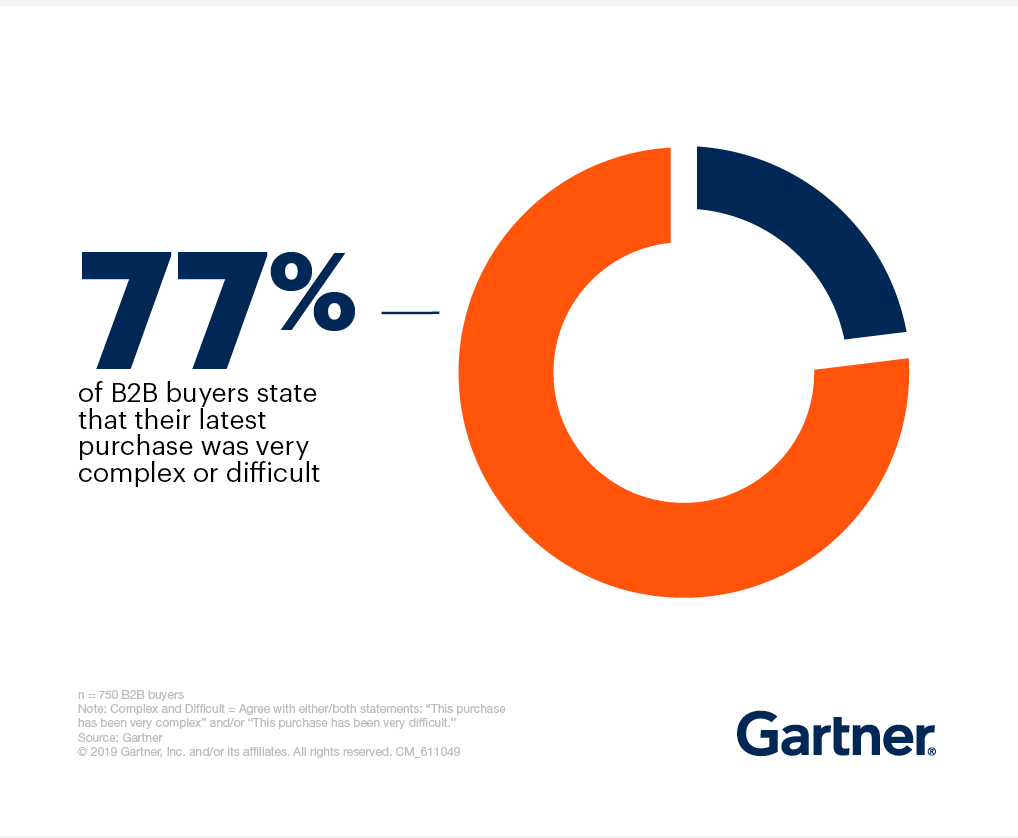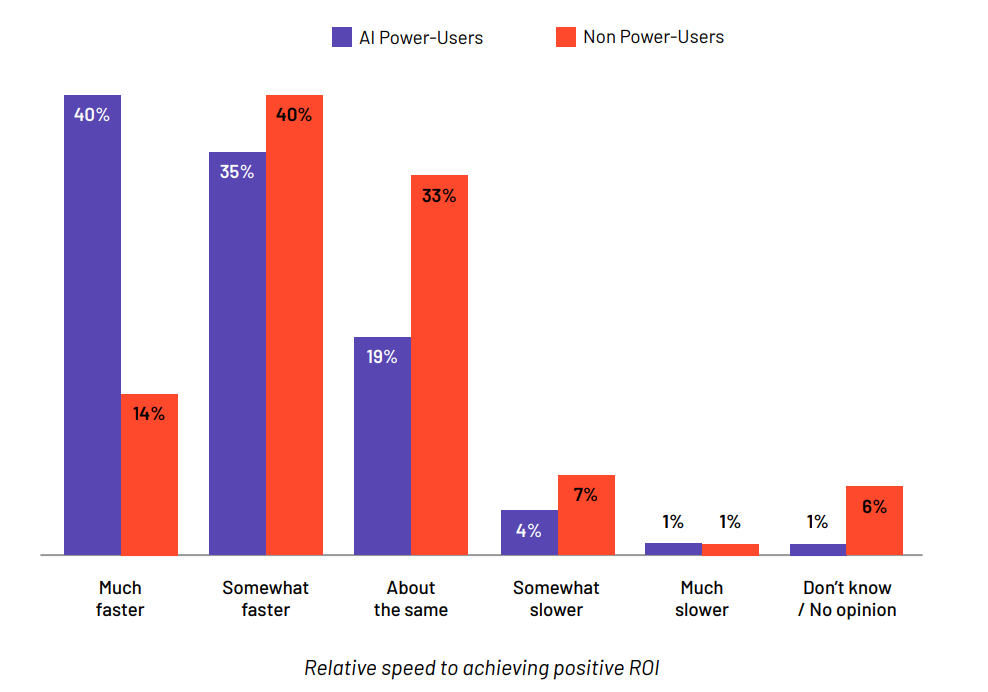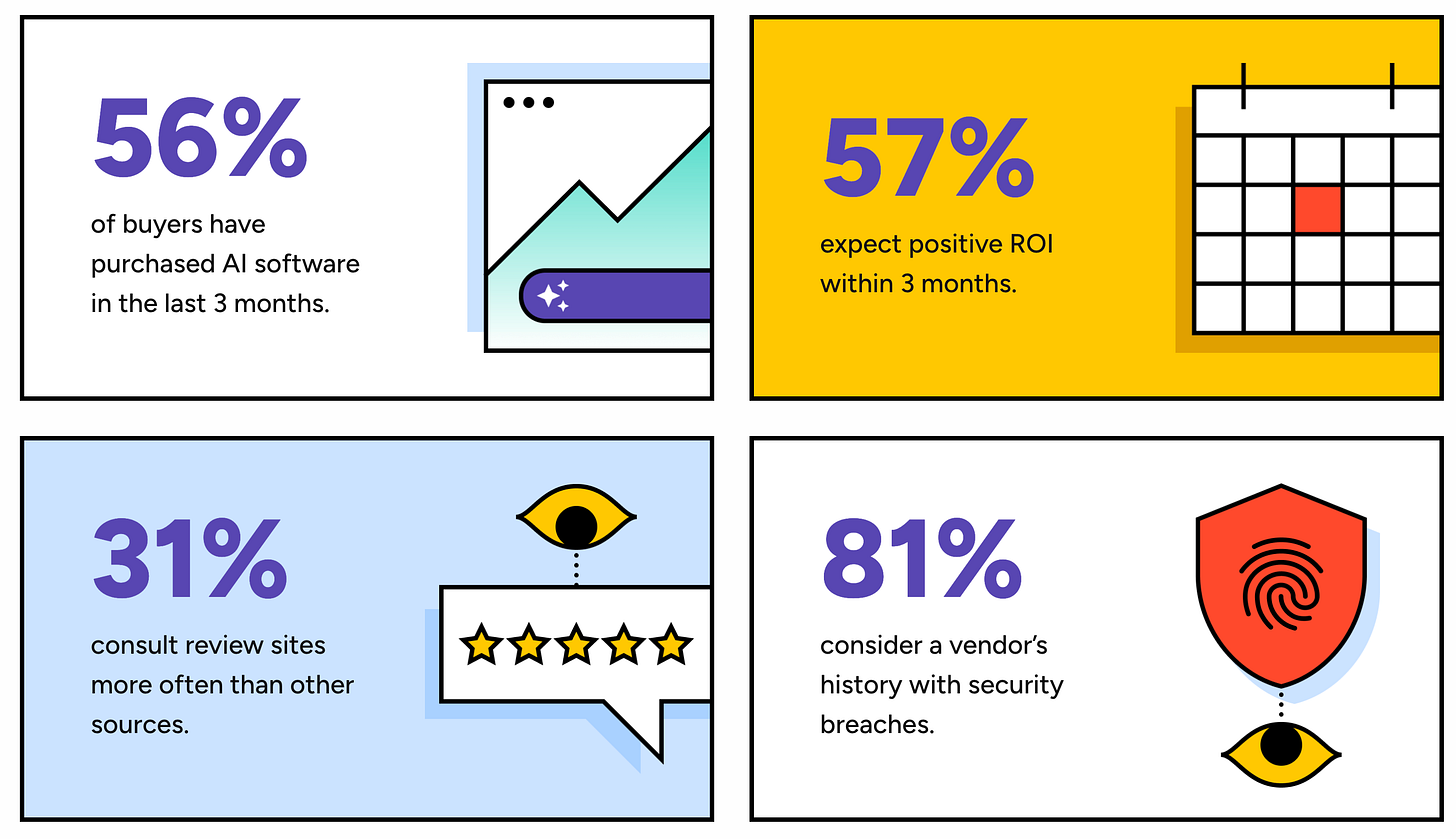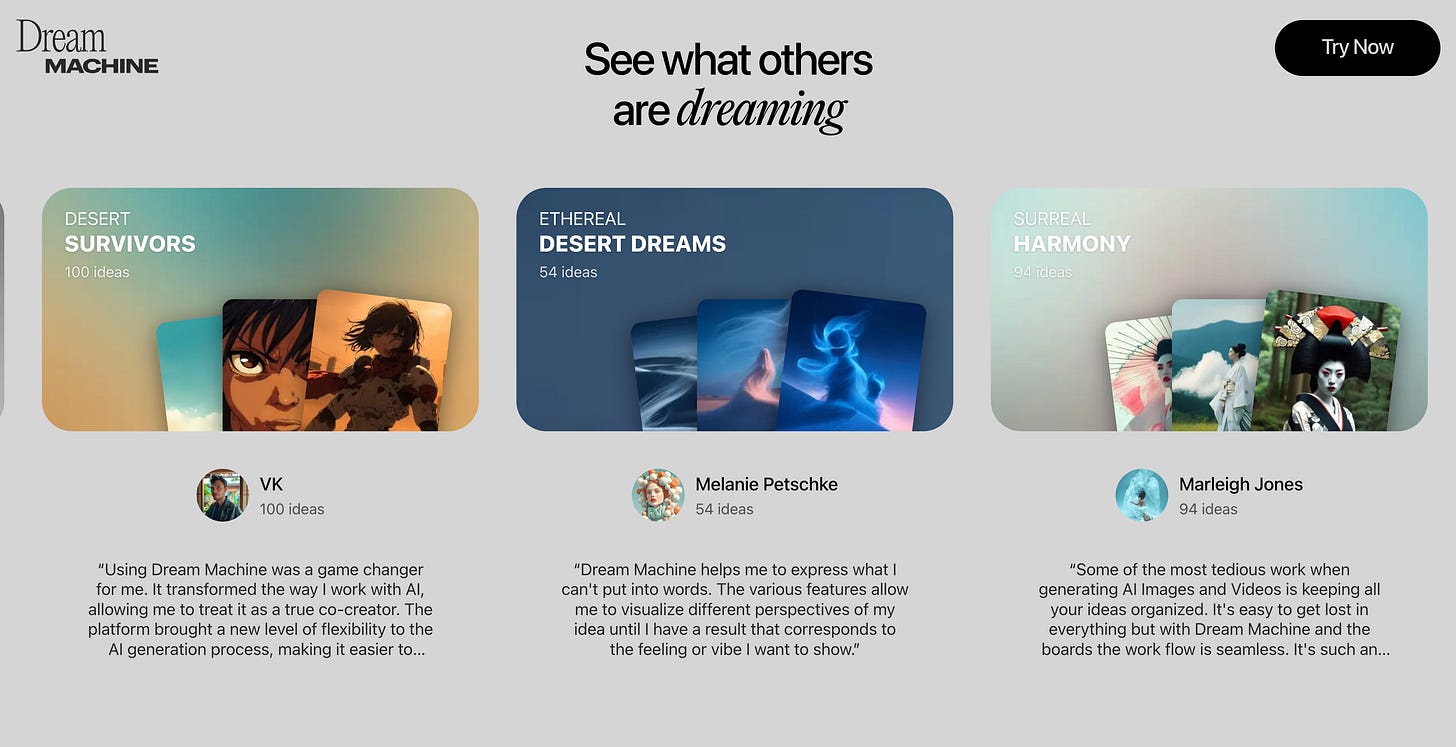Psychology-First Conversion System: Full Implementation
This comprehensive playbook reveals how Linear beat Jira, Perplexity conquered Google, and Claude transformed chat into creation - not through superior features, but by mastering buyer psychology.
If you’re not a subscriber, these are the most loved posts:
5 LinkedIn Systems Generating 8-Figure B2B Pipelines [Complete Teardown]
Distribution Before Product: The Operator’s 90-Day GTM Playbook - With Prompts
The Lenny Rachitsky Playbook : Prompts, Growth Frameworks, and Strategies - Part 1 of 2
AI (ChatGPT, Gemini, Claude) Prompts for CMOs, Marketers and Growth Builders - Part 1 of 3
What You’ll Learn in the Next 15 Minutes
🎯 The Reality Check (Minutes 1-3)
Why your AI tool is still losing to inferior competitors
The psychological shift that killed feature-based sales in 2024
🧠 The Psychology Assessment (Minutes 4-6)
ASSET: Psychology Trigger Assessment Tool - Instant diagnostic for conversion blind spots
The 15-point assessment that reveals your conversion gaps
Why smart buyers make the most anxious prospects
📊 The Market Crisis Data (Minutes 7-9)
Why 77% of B2B buyers call purchases “overwhelmingly complex”
How choice overload destroys conversions (with research that proves it)
ASSET: Choice Overload Assessment Quiz - Linear’s psychology victory breakdown
⚙️ The Implementation System (Minutes 10-12)
Five psychology levers that convert free users to paid subscribers
ASSET: 7-Day Implementation Sprint Guide - The systematic approach that took conversions from 3.2% to 19.7%
ASSET: AI Psychology Prompt Library (5 important prompts) - Generate psychology-driven copy that actually converts
📑 Strategic Surprise Giveaway: Complete Psychology Conversion Audit Framework
🧠 AI Psychology Prompt Library
🚀 Your Competitive Advantage (Minutes 13-15)
ASSET: Case Study Replication Playbook - Steal psychology strategies from Perplexity, Claude, and other winners
ASSET: Psychology Conversion Audit Framework (normally $500, free today) - Professional-grade assessment system
Why your window to master this is closing fast
Complete Asset Library Included:
Diagnostic Tools: Psychology Trigger Assessment, Choice Overload Quiz, Market Saturation Diagnostic
Implementation Resources: 7-Day Sprint Guide, AI Prompt Library, Conversion Audit Framework
Strategic Frameworks: Case Study Replication Playbook, Psychology Metrics Dashboard, Community Access Guidelines
Total Value: $2,847 in consulting frameworks, free with this newsletter
First, Here’s a deal for YOU (Claim your Credits)
Gimmefy is the AI marketing content specialist platform that multiplies your ideas into campaigns in minutes.
Built with a Brand Vault, Studio chat, reusable Playbooks, pre-trained Agents, and an advanced Visual Lab, it keeps every output on-brand and marketing ready-ready.
From solo creators to startups, small businesses, and global enterprises, gimmefy delivers marketing content with speed, quality, velocity, and precision.
Generate your next content or campaign through the link below and get 250 additional credits FREE*
Personal Story: When Features Failed and Psychology Won
For two startups building “Advanced AI-powered analytics”...
One said “Feel confident in every decision.”
Another one said “Never feel overwhelmed by your data again.”
Same tech. Completely different psychology.
Can you see the difference?
The AI market had evolved past features, and we were still stuck in 2023.
Now I see this everywhere.
Brilliant AI tools not getting traction despite being better.
Feature-rich platforms getting crushed by simpler competitors who get this one thing:
People don’t buy AI features in 2025. They buy relief from feeling stupid about AI.
They want to feel smart, confident, in control. Not impressed by technical specs.
This framework took conversions from 3.2% to 19.7% within 90 days.
But more importantly, it might save your AI tool from becoming another feature war casualty.
Do you also want to win with psychology like the top 1%? Keep reading...
Immediate Value Asset: Psychology Trigger Assessment Tool
Before we go further, let’s figure out where you’re losing conversions.
This quick assessment will show you which psychological triggers you’re missing and which ones to hit first.
The Psychology Trigger Check
Be honest. Rate each from 1-5 (1=never happens, 5=nailed it):
Making People Feel Smart:
Your messaging makes prospects feel like experts, not idiots □
You position your tool as their secret weapon, not their replacement □
They can actually picture what success feels like □
Social Proof That Actually Works:
You show wins from their exact industry/role □
Your testimonials mention feelings, not just numbers □
They think “that’s literally me” when reading your stories □
Killing Decision Paralysis:
You actively cut through the overwhelm □
Your comparisons guide them instead of confusing them □
The “right choice” is obvious (without being pushy) □
Building Real Trust:
You call out their specific fears before they do □
Your guarantees address emotional risk, not just refunds □
They think “these people actually get it” □
Creating Belonging:
Your copy sounds like their aspirational self □
You drop insider knowledge that makes them feel special □
They want to be part of your world, not just buy your tool □
What Your Score Means:
20-25: You’re already thinking like this. Time to optimize
15-19: Solid foundation. Just need to fill the gaps
10-14: Hit or miss. Focus on your lowest scores first
5-9: Still stuck in the feature showcase. Psychology overhaul needed
Your Next Move: Start from the points where you scored lowest. The rest of this guide will show you exactly how to fix it.
But first, do you want to see why most AI tools are completely bombing this psychology test?
Why Features Don’t Convert Anymore
Modern AI buyers aren’t making rational decisions. They’re making survival decisions.
When someone’s staring at 47 project management tools, 63 content platforms, and 128 analytics solutions, they don’t compare feature lists.
They look for psychological safety.
Dr. Barry Schwartz nailed this in his choice overload research. When humans face too many similar options, we don’t optimize... we “satisfice” (originally quoted by Herbert Simon).
Choice overload: the classic thesis (Source)
We pick “good enough” plus “feels safe” over “technically superior” plus “holy crap this is complicated.”
Your 47-feature dashboard isn’t competing with their current tool. It’s competing with their urge to avoid deciding anything at all.
And avoidance always wins.
The Three Psychology Shifts That Are Destroying Feature-Based Sales
1. Feature Parity Fatigue
When every tool says the same stuff, prospects tune out capabilities entirely. They shift to: “Who actually can solve my use case precisely?” not “Who has the most integrations?”
2. Complexity Paralysis
Each new feature means “more stuff you’ll need to figure out.” A 15-minute onboarding video is a 15-week commitment (in their head) for learning your system.
Features feel like efforts now.
3. Professional Identity Protection
“Looking inefficient hurts worse than missing optimization”
Prospects would rather stick with “good enough” than risk being the person who picked the wrong tool.
What’s Actually Happening Out There
The numbers are ugly:
Trial→paid clusters near Day 7 (Source)
Time from trial to decision: Most trial→paid conversions cluster around day ~7
People who finish your demo: Expect roughly ~30-35% completion for short product tours (Intercom reports 34% median for 5-step tours)
Median 34% completion for 5-step tours (Source)
Interactive demo benchmarks (Source)
Top reason for bailing: 77% of B2B buyers say their latest purchase was very complex/difficult (strong proxy for “felt overwhelming”)
Buying complexity fuels overwhelm (Source)
Runner-up (unclear value/fit): 57% of buyers expect positive ROI within 3 months, so vendors who can’t show fast value lose momentum
ROI expectations are accelerated (Source)
(Source)
Third (too similar): Only ~5% of brands are perceived as truly unique by consumers; buyers shrink shortlists (now 49% consider just 1-3 products)
People aren’t leaving because you lack capabilities. They’re leaving because you lack psychological clarity.
Your Real Competition
You’re not fighting other AI tools. You’re fighting the status quo.
And the status quo has one massive advantage. It’s familiar.
Every feature you add widens the gap between “what they know” and “what you’re asking them to risk learning.”
The winners figured this out:
Notion doesn’t sell “productivity software”. They sell “thinking enhancement.”
Loom isn’t “video recording”. They’re “async communication tool”
They’re selling use cases with a win-feeling. With features as proof points.
Big difference.
Market Saturation Diagnostic: Are You Fighting Feature Wars?
Find out if you need a psychology rescue mission or just some fine-tuning
How Crowded Is Your Space?
1. Competitor Reality Check - Count how many tools do basically what you do.
1-3 competitors = You’re still breathing
4-10 competitors = Getting tight in here
11+ competitors = Welcome to the chaos
2. The Feature Copycat Test - What percentage of your “unique” features do competitors also have?
Under 50% = You’ve got something special
50-75% = You’re different, barely
75%+ = You’re basically identical
3. The Prospect Exhaustion Factor - How many tools does your typical buyer compare before deciding?
1-2 tools = Easy choice
3-5 tools = Decision fatigue is already there
6+ tools = They’re overwhelmed and you know it
How Human Do You Feel?
4. The Emotional Clarity Test - Can someone instantly picture how they’ll feel using your tool?
Crystal clear = They get it immediately
Kinda clear = Mixed signals, confusing
Not clear = You’re still talking features
5. The Mirror Test - Do prospects think “that’s me” when they see your stuff?
Definitely = Strong connection
Sometimes = Generic professional vibe
Rarely = You sound like a manual
Your Psychology Emergency Level:
Crowded + Emotionally Weak = Red Alert: Complete messaging rework needed in 30 days
Crowded + Emotionally Strong = Fine-Tune Mode: Polish what’s working
Uncrowded + Any Emotion Level = Gold Rush: Build your moat before everyone else shows up
What This Means for You: Your diagnostic score tells you exactly which psychology triggers to fix first. Already in competition space? Emotional differentiation should be a priority. Room to breathe? Start building a psychological moat now.
The New Buyer Reality - How Choice Overload Kills Conversion
Choice overload isn’t just friction anymore. It is now killing conversions.
AI tool decision paralysis isn’t just about too many options. It’s about psychological complexity.
Every evaluation creates a new anxiety:
“What if I’m missing something crucial?” (Feature FOMO)
“Will this mess up what already works?” (Integration terror)
“What if my team hates it?” (Adoption anxiety)
“Will this company disappear next year?” (Startup paranoia)
“How do I justify this spend?” (ROI pressure)
The Trust Shift: From Logic to Feelings
Old B2B buying: Need → Compare → Calculate → Choose
New B2B buying: Need → Get overwhelmed → Seek safety → Pick familiar → Or skip buying entirely
This happened because trust as a “buying factor” has evolved. People don’t just need to trust your product anymore. They need to trust their ability to choose wisely when everything looks the same.
The winners aren’t building the best features. They’re making prospects feel smart about deciding.
One of my friends picked Typeform when he was comparing AI enabled form tools. Not because it was better... because another friend in WhatsApp messaged, “We are using Typeform and so far it’s good enough.”
How Linear Beat Jira with Pure Craft
Craft as a moat (Source)
When Linear launched in 2019, the project management space was already crowded with options. Jira, Asana, Monday, etc... everyone fighting with bigger feature lists and more integrations.
Linear changed the entire game.
Their Bet: Craft Over Chaos
Instead of building everything for everyone, Linear went obsessively narrow. Fast, keyboard-driven, opinionated as hell. They literally said they cared more about “quality and craft” than hitting feature checklists.
By 2025: 15,000+ customers including OpenAI, Scale AI, and Perplexity. Fresh $82M Series C at $1.25B valuation. Oh, and 280% profit growth year-over-year. (Source)
Not bad for the “we do less stuff” approach.
Why This Actually Works
Here’s the psychology: when your prospects are already overwhelmed by complex tools, “minimal surface area” feels like relief, not limitation.
Linear’s opinionated defaults eliminates decision fatigue. Their keyboard shortcuts feel efficient. Their clean interface looks professional.
They made evaluation easier, not harder.
The Three Psychology Shifts That Changed Everything
1. “What can it do?” became “How will I feel?”
Your prospects aren’t starting with feature comparisons anymore. They’re asking:
Will I feel confident using this?
Will my team think I’m smart for picking it?
Will this make me look like I know what I’m doing?
The emotional homework happens before they even look at your pricing page.
2. “Best features” became “Safest choice”
When every tool does basically the same thing, safety wins over superiority. Prospects would rather succeed with “good enough” than risk failing with “technically amazing.”
Career self-preservation always beats optimization.
3. “Individual research” became “Community validation”
Nobody trusts your marketing anymore. They want to hear from people like them: “I use this and don’t regret it.”
Peer validation provides the psychological safety that feature lists can’t.
Why Smart People Get Stuck
Here’s the weird part: the MORE someone knows about your space, the MORE paralyzed they get.
Technical buyers can spot every tiny difference, every potential problem, every possible edge case. They can see too many ways things could go wrong.
The smartest people in your market might be your most anxious prospects.
Value Asset: Choice Overload Assessment Quiz
The StartupGTM Choice Overload Assessment: Is Your Prospect Experience Creating or Reducing Decision Anxiety?
Evaluate your current conversion process against these choice overload indicators:
Decision Complexity Audit:
1. Choice Points Count
How many decisions does a prospect make from awareness to purchase?
Count: Feature selections, plan choices, integration decisions, timeline choices, team setup options
Score: 1-3 decisions (Simple), 4-7 (Manageable), 8+ (Overwhelming)
2. Feature Comparison Complexity
How many features do you prominently display for comparison?
Score: 3-5 core features (Focused), 6-10 (Moderate), 11+ (Analysis paralysis zone)
3. Information Processing Load
How much information must prospects process before feeling confident to decide?
Assess: Demo length, case study detail, feature documentation depth
Score: <10 minutes to confidence (Streamlined), 10-30 minutes (Standard), 30+ minutes (Overload)
Psychological Safety Assessment:
4. Decision Confidence Support
Do prospects get reassurance about making the right choice?
Look for: Peer validation, choice guidance, decision frameworks
Score: Clear guidance provided (High), Some support (Medium), Figure-it-out-yourself (Low)
5. Cognitive Load Management
How well do you guide attention to what matters most?
Evaluate: Information hierarchy, progressive disclosure, guided discovery
Score: Clear priority guidance (Excellent), Some organization (Good), Information dump (Poor)
Your Choice Optimization Priority:
High complexity + Low safety = Immediate simplification needed
High complexity + High safety = Add more decision support
Low complexity + Any safety = Maintain and optimize
Next Steps: Use Section 3’s framework implementation to address your highest-scoring areas of choice overload. Focus on building decision confidence before adding decision options.
Five Levers That Still Move Free → Paid - The Psychology Framework That Works
While your competitors are focusing on releasing more features, the smart move is to pull psychological levers instead.
I’ve found five psychological principles that consistently engage prospects and convert them for the next step.
They work because they fix the real barriers to AI adoption, not the ones we assume exist.
Lever 1: Make Them Feel Smart (Not Stupid)
Complex dashboards, endless settings, overwhelming possibilities → Users immediately think “I’m too dumb for this.”
Successful tools flip it completely. They make users feel progressively smarter and more capable.
The Psychology Behind It
Competence is a basic human need. When users feel competent, they credit your tool for their success. When they feel lost, they just logout.
How to Build This
Quick Win Guarantee: Design the first 5 minutes so they literally cannot fail
Confidence Staircase: Every session should end with them feeling more capable than when they started
Smart User Language: Say “You discovered...” instead of “The tool found...”
Example
Grammarly could overwhelm you with grammar rules and writing theory. Instead, they make you feel like a better writer. Each suggestion feels like collaboration, not correction.
People upgrade because they want to become even better writers, not because they need more features.
That’s the difference.
Lever 2: Turn Them Into Who They Want to Be
Free users upgrade when your tool becomes part of who they are professionally. The best AI tools help users become their aspirational selves.
The Psychology
When tool usage matches someone’s ideal identity, using it feels like self-expression, not software dependence. Identity-consistent behavior reinforces itself.
How to Build This
Elevate Their Role: Make them feel like strategic thinkers, not task-doers
Connect Them to Peers: Let them see others who share their aspirational identity
Track Their Growth: Help them document their capability development
Example
Figma doesn’t just let you design... it makes you feel like a “real designer.” The pro workflows and collaboration features reinforce that identity shift.
People upgrade to become pro designers, not just get more features.
Lever 3: Make Leaving Feel Like Losing Friends
Free users in real communities convert 3.2x more than isolated users. But it has to be the right kind of community... one that makes them feel smarter and more connected.
The Psychology
Belonging and status are core human needs. When your tool creates genuine community connections, leaving means losing social capital, not just software.
How to Build This
Celebrate Wins Together: Public recognition for member successes
Peer Teaching: Users teaching each other creates deep investment
Status Ladders: Clear ways to advance through community contribution
Lever 4: Make It Feel Like Theirs
The more someone customizes your tool, the harder it is to leave. But customization has to feel personal, not technical.
The Psychology
The endowment effect makes us value what we own. Digital ownership comes through personalization that reflects who we are, not just what we need.
How to Build This
Learn Their Style: Tool adapts to how they work over time
Personal Expression: Customization that shows personality, not just function
Show Investment Value: Let them see their accumulated customization
Lever 5: Fear of Missing Their Better Self
The strongest motivator for upgrading is what they lose by not becoming who they could become.
The Psychology
Loss aversion beats gain pursuit every time. People upgrade to avoid the pain of missed potential, not just to access features.
How to Build This
Show the Gap: What’s possible vs. where they are now
Peer Progress: Let them see others advancing faster
Compound Growth: Emphasize momentum that builds over time
Which psychology trigger hit hardest for your tool? Share your experience in the comments.
Strategic Surprise Giveaway: Complete Psychology Conversion Audit Framework
Exclusive for StartupGTM Readers: The Psychology Conversion Audit Framework
You’ve made it halfway through this newsletter, which means you’re serious about psychology-driven conversion. Here’s something I’ve never shared publicly: the complete audit framework that our clients use to diagnose and fix psychological conversion barriers.
The StartupGTM Psychology Conversion Audit (Normally $500, Free Today)
This isn’t a template. It’s the actual methodology that we use to analyze psychology gaps for companies paying $2,000+ per audit. You’re getting the complete system:
Module 1: Psychological Barrier Identification (45 minutes)
The 23-point psychological friction assessment
Customer journey empathy mapping templates
Anxiety trigger identification protocols
Hidden objection discovery framework
Module 2: Competence & Control Analysis (30 minutes)
User capability gap assessment
Decision confidence measurement tools
Implementation anxiety evaluation
Control perception optimization guide
Module 3: Identity & Community Integration Review (60 minutes)
Aspirational identity alignment audit
Community psychological value assessment
Peer validation system evaluation
Status progression design analysis
Module 4: Choice Architecture Optimization (45 minutes)
Decision complexity reduction framework
Choice overload prevention protocols
Progressive disclosure optimization
Psychological safety enhancement guide
Module 5: Implementation & Results Tracking (30 minutes)
Psychology-focused A/B testing designs
Emotional conversion metric definitions
Long-term psychological health monitoring
Community feedback integration systems
Why I’m Sharing This Now
Three reasons: First, the AI tool market is at an inflection point. Companies that master psychology in the next 90 days will dominate for years.
Second, our audit framework only works when implemented correctly—sharing it helps identify companies serious about psychology transformation. Third, the community discussion this generates will help everyone improve faster.
Your Audit Implementation Strategy
Don’t try to complete the entire audit in one session. Spread it over two weeks, one module every 2-3 days. This gives you time to implement insights before moving to the next psychological layer.
Most importantly: share your results. The Psychology Conversion Audit becomes exponentially more valuable when you can compare findings with other AI tool founders facing similar challenges.
If you need access to Complete Psychology Conversion Audit Framework, please send me a message over a DM.
Psychology-First, AI-Amplified - Your 7-Day Implementation Sprint
This 7-day sprint turns everything you’ve learned into measurable psychology improvements. By day 7, you’ll know exactly which psychological levers work for your audience.
The Philosophy Flip
Most people optimize features first, then add a layer of psychology. We’re doing the opposite - starting with emotional outcomes and using features as proof points.
AI makes this approach scalable through rapid testing and personalization.
Day 1: Know Where You Stand
Morning (2 hours): Psychology Reality Check
Audit your conversion process through a psychology lens:
Record your current signup-to-paid rate
Document every emotional trigger (or lack thereof) in your messaging
Find where prospects might feel stupid, overwhelmed, or unsafe
Screenshot key pages for before/after comparisons
Afternoon (2 hours): Look for the Winners
Study 3 successful competitors, but focus on psychology:
What identity transformation do they promise?
How do they kill choice overload and decision anxiety?
What community signals do they emphasize?
How do they make AI feel safe and accessible?
Day 1 Goal: Psychology gap analysis with improvement opportunities ranked by impact.
Day 2: Flip Your Messaging
Morning (3 hours): Rewrite Everything
Transform your value props using psychology-first language:
Old: “Advanced AI analytics for better decisions”
New: “Feel confident in every strategic decision”
Old: “Automated workflow optimization”
New: “Reclaim time for work that actually matters”
Launch A/B tests on your top 3 conversion pages.
Afternoon (1 hour): AI-Powered Personalization
Use AI to match psychology messaging to user behavior:
Hesitant users → safety and risk-reduction
Engaged users → competence and advancement
Social users → belonging and status
Day 2 Goal: Live A/B tests running with psychology-focused messaging.
Day 3: Community Psychology Overhaul
Morning (2 hours): Social Proof That Actually Works
Revamp testimonials to emphasize feelings over features:
Don’t say: “Increased efficiency 40%”
Say: “Finally feel in control of my workload”
Don’t say: “Saved 10 hours per week”
Say: “Got my thinking time back”
Afternoon (2 hours): Community Signals Everywhere
Add psychological triggers throughout your funnel:
Peer activity (”12 marketers like you joined this week”)
Achievement celebrations from similar users
Identity-affirming language (”Join 2,000+ strategic marketers”)
Day 3 Goal: Enhanced social proof with psychological focus deployed.
Day 4: Kill Decision Paralysis
All Day (4 hours): Simplify Everything
Redesign your decision architecture:
Cut primary decisions from awareness to purchase (max 5)
Replace self-service comparison with guided discovery
Add confidence boosters (”Teams like yours usually choose...”)
Use progressive disclosure to prevent overwhelm
AI Integration: Analyze user behavior to suggest optimal next steps and provide personalized reassurance.
Day 4 Goal: Simplified decision flow with AI-powered confidence building.
Day 5: Identity Transformation
Morning (2 hours): Identity-Driven Copy
Update messaging to reinforce who they’re becoming:
Onboarding: “You’re becoming a data-driven marketing leader”
Features: “Strategic marketers use this to...”
Success: “You just made a strategic decision that...”
Afternoon (2 hours): Build Competence Progressively
Design experiences that make users feel smarter:
First session: Guaranteed win in 5 minutes
Week 1: Three capability-building achievements
Month 1: Clear competence progression tracking
Ongoing: Regular “you’re getting better” moments
Day 5 Goal: Identity-reinforcing language and competence-building UX live.
Day 6: AI Psychology Amplification
All Day (4 hours): AI Psychology Systems
Deploy AI to enhance psychological conversion:
Sentiment analysis to spot anxiety points
Predictive modeling to identify users needing confidence
Automated personalization based on psychological profile
Dynamic content optimization for emotional engagement
AI Psychology Integration: Create systems that respond to psychological needs in real-time.
Day 6 Goal: AI-powered psychology enhancement systems collecting data.
Day 7: Measure and Plan
Morning (2 hours): Psychology Impact Analysis
Compare the results:
Conversion rates: baseline vs. psychology-enhanced
Engagement changes: time on site, interaction quality
User feedback: support sentiment, satisfaction scores
Document which psychological levers hit hardest
Afternoon (2 hours): Long-term Strategy
Plan ongoing psychology optimization:
Identify highest-impact improvements for next month
Design ongoing A/B testing protocol
Create community engagement strategy
Plan AI psychology tool expansion
Day 7 Goal: Complete impact report with 90-day optimization roadmap.
Sprint Success Targets
Conversion Rate: 15-25% improvement
User Engagement: 30% increase in meaningful interactions
Time to Conversion: 20-40% reduction
User Satisfaction: Measurable improvement in emotional feedback
Your psychology transformation starts now. Within the next 7 days, you’ll have data proving whether psychology or features actually drive your conversions.
Value Asset: AI Psychology Prompt Library
AI Psychology Prompt Library: Below are 5 (out of 50+) Prompts for Conversion Copy That Actually Converts
Transform your AI tool marketing with psychology-focused prompts that hit emotional needs, not just technical specs
Making People Feel Smart
Prompt #1 - Competence Builder
You are a psychology-driven copywriter specializing in competence enhancement. Write copy for [AI tool] targeting [specific role] that makes them feel like strategic innovators, not just more productive.
CONSTRAINTS: Maximum 150 words. Three core messages only.
REQUIREMENTS:
1. Use “you discovered/identified/uncovered” language (never “the tool found”)
2. Include ONE confidence marker: “strategic decision,” “competitive insight,” or “data-driven advantage”
3. Position AI as intelligence amplification, not replacement
FORBIDDEN PHRASES: “features,” “capabilities,” “functionality,” “automates,” “saves time”
STRUCTURE: Current expertise acknowledgment → Intelligence amplification → Strategic outcome
TONE: Respectful of existing expertise, confident but not condescending.
TARGET EMOTION: Professional confidence and strategic competence.Prompt #2 - Identity Evolution
You are an identity transformation expert. Create messaging showing [AI tool] as the bridge from [current professional struggle] to [aspirational identity mastery].
CONSTRAINTS: Maximum 150 words. Three-part structure required.
STRUCTURE:
1. Current identity acknowledgment: “As a [role] who [specific struggle]...”
2. Transformation pathway: “Transform from [current] to [aspirational]...”
3. Social recognition outcome: “Your [team/peers/leadership] will notice...”
REQUIREMENTS:
1. Use aspirational peer language: “join other forward-thinking [role]”
2. Include identity reinforcement: “become the [aspirational identity] you are”
3. Reference status/recognition outcome
FORBIDDEN: Generic productivity language, feature mentions, inadequacy implications
TONE: Confident and aspirational, validating current competence while showing growth path.
TARGET EMOTION: Professional identity elevation and peer recognition anticipation.Killing Anxiety & Fear
Prompt #3 - Decision Confidence
You are a choice architecture expert eliminating decision paralysis. Write copy that makes choosing [AI tool] among [number] options feel obvious and safe.
CONSTRAINTS: Maximum 120 words. Four-part structure required.
STRUCTURE:
1. Choice difficulty acknowledgment: “We know choosing between [X] options feels...”
2. Peer validation: “Most teams like yours discovered...”
3. Decision simplification: “You’re not looking for [complex thing], you’re looking for [simple thing]”
4. Confidence signal: “Teams like yours choose us because...”
REQUIREMENTS:
1. Address decision anxiety directly without creating more overwhelm
2. Include peer validation focused on decision wisdom, not outcomes
3. Provide gentle guidance without pressure
FORBIDDEN PHRASES: “features,” “best,” “superior,” “compare,” “versus,” “more capabilities”
TARGET EMOTION: Decision confidence and choice validation.Building Belonging
Prompt #4 - Emotional Social Proof
You are a social psychology expert creating belonging-focused testimonials. Transform results into emotional journey stories that build identity alignment.
CONSTRAINTS: 100-120 words per testimonial. Emotional transformation focus required.
STRUCTURE (per testimonial):
1. Identity + initial emotional state: “As a [role], I felt [negative emotion]...”
2. Transformation moment: “After [using tool], I finally felt [positive emotion]...”
3. Peer recognition: “My [team/boss/peers] noticed [change]...”
4. Decision validation: “I knew I made the right choice when...”
REQUIREMENTS:
1. Focus on emotional outcomes over metrics
2. Include peer recognition or status change
3. Show decision confidence validation
FORBIDDEN: Pure metrics, generic satisfaction, feature mentions
TARGET OUTCOME: Prospect sees themselves in success stories and feels validated about potential decisions.How to Use These:
Replace [brackets] with your specific context
Test with your favorite AI (GPT-5, Claude, etc.)
A/B test generated copy against your current feature-focused messaging
Track engagement AND conversion, not just conversion
Why This Works: These prompts force AI to lead with psychology, then back it up with features. Most prompts do the opposite i.e. start with features and hope for emotional connection.
Start with feelings. Add proof points. Win conversions.
Psychology-First Conversions: AI Tools That Quietly Cracked the Code (2024-2025)
While everyone was fighting feature wars, these companies figured out psychology wins. Here’s what they actually shipped—and the psychological principles you can steal.
Perplexity: Citations as Trust Devices, Not Features
What They Built: Inline citations became the core part of UI. Earlier it used to be a standard footnote. Plus the Publishers’ Program to formalize media relationships.
The Psychology:
Trust Through Verification: Sources flip “Is this true?” into “I can check this myself”
Risk Reduction: Official publisher partnerships = legitimate knowledge access
Choice Simplification: “Answer engine” reframes the job from comparing search results to verifying one answer
How It Shows Up: Every result has clickable references. Publisher partnerships get announced like partnerships, not features.
Steal This: Add verifiability UI (citations, data sources, audit trails) exactly where doubt kills trials—pricing page, first workflow, enterprise demos.
Claude: Anyone Can Build and Ship
What They Built: Artifacts (live side-pane for editable code/docs) and Apps from Claude (build and share interactive apps inside Claude).
Build a Claude-powered app
The Psychology:
Competence Building: Users ship things instead of just reading responses
Identity Shift: From “chat user” to “builder” in the same session
Ownership Effect: You own a real artifact after one minute, creating psychological investment
How It Shows Up: Exploring means “make something that works,” not “try some prompts.”
Steal This: Ship a creation medium where first use ends with a kept asset (file, mini-app, report) instead of just a conversation.
Cursor: Selling Status and Flow
What Happened: $2.6B valuation (Dec 2024) → ~$10B valuation (mid-2025). 1M+ users with explosive ARR growth.
The Psychology:
Social Proof: Media coverage + brand-name customers = status by association
Flow State: Whole-file edits make users feel like senior developers
Identity Story: “AI-native IDE” and “vibe coding” create narrative people want to join
How It Shows Up: Revenue/valuation coverage = “safe bet” signal. Real build videos create “I can do that too” moments.
Steal This: Create proof reels (real tasks done end-to-end) and “Why teams switch” pages with named logos.
Luma Dream Machine: Instant Wins + Viral Momentum
What They Built: Dream Machine with open web/iOS access. No complicated setup, shareable outputs from day one.
The Psychology:
Instant Gratification: First video clip in minutes, not hours
Social Proof: Viral showcases normalize trying and upgrading
Creative Control: Growing editing features make it feel like craft, not lottery
How It Shows Up: User-generated showcases become the marketing. Paid tiers remove friction to production.
Steal This: Add “showcase to save” flow - auto-generate shareable preview after first success, with upgrade triggers in the share modal.
The Pattern You Can Use This Week
Make trust visible: Add source/verification UI in results
Make trials feel productive: Give users something to keep from session one
Sell feelings with proof: Share real adoption stats + customer stories with demo videos
Kill first-win latency: Remove waiting; make sharing the default
Lead with safety: Demo your safeguards and list standards/partners prominently
These companies won because they understood: people don’t buy AI tools... they buy confidence, status, and psychological relief.
Which psychology principle will you ship first?
The Psychology Replication Framework (AI Tools Focus)
You can’t clone features but you can steal the psychology that makes them convert.
Step 1: Pick Your Psychology Lane
Circle the one or two levers you can actually own:
Trust & Verifiability (The Perplexity Play)
User fear: “Will this hallucinate when my boss sees it?”
Your fix: Visible sources, data trails, “I can verify this” moments
Competence & Shipping (The Claude Play)
User worry: “Am I just chatting or actually building?”
Your fix: Creation surfaces, kept outputs, “I made something real” feelings
Identity & Status (The Cursor Play)
User desire: “I want to work like an elite team”
Your fix: Credible logos, proof videos, “I’m that caliber” signals
Speed & Momentum (The Luma Play)
User need: “First win in minutes, something I can show off”
Your fix: Zero-wait access, one-click magic, instant shareability
Step 2: Ship Psychology-First Product Moments
Trust (Perplexity Style)
Inline citations in results, not hidden
“Why this is safe” copy on empty states and pricing
Competence (Claude Style)
Replace “try a prompt” with “create your first [thing]”
Auto-save artifacts, show progress ticks, add export buttons
Identity (Cursor Style)
90-second proof reels of real tasks done end-to-end
“Why teams switch” page with named logos + workflow replacements
Speed (Luma Style)
First win under 3 minutes with preloaded templates
Auto-generate share links after first success
Step 3: Measure Feelings, Not Just Features
Track psychology with events + surveys:
Trust: Source clicks, verification interactions, “I can verify outputs” ratings
Competence: Time-to-first-artifact, day-7 retention, “I accomplished something valuable” scores
Identity: Proof video completion, case study clicks, “This helps me work like a pro” acknowledgement
Speed: First-win latency, share-through rates after outputs
Tag everything with psychology lever dimensions so you can segment by what actually moved people.
Value Asset: Case Study Replication Playbook
The StartupGTM Case Study Replication Playbook: Analyze and Adapt Psychology Strategies from Industry Leaders
Use this systematic framework to extract and adapt psychological strategies from successful companies in any industry.
Phase 1: Psychology Archaeology (15 minutes per company)
1. Identity Analysis
What aspirational identity does the company help users achieve?
What language patterns reinforce this identity transformation?
How do they position users as heroes of their own story?
2. Anxiety Mapping
What fears or anxieties does the user experience address?
How do they reduce decision anxiety and choice overload?
What psychological safety signals do they provide?
3. Competence Building Assessment
How do they make users feel progressively more capable?
What learning curve anxiety do they address?
How do they document user growth and progress?
Phase 2: Psychology Adaptation (30 minutes)
1. Context Translation
Which psychological principles apply to your AI tool market?
How could you adapt their anxiety reduction strategies?
What identity transformation could your tool enable?
2. Implementation Planning
What’s your equivalent of their signature psychology tactic?
How could you test their approach in your conversion funnel?
What would success look like with their psychology strategy?
Phase 3: Testing Protocol (Ongoing)
1. A/B Testing Setup
Test adapted psychology strategies against current approach
Measure emotional engagement, not just conversion rates
Track long-term retention and user satisfaction
2. Results Analysis
Which psychological triggers work best for your audience?
How do users respond to identity-focused vs. feature-focused messaging?
What anxiety reduction strategies generate strongest response?
Replication Success Framework: Focus on psychology principles, not surface tactics. Successful replication adapts emotional strategies, not specific features or copy.
Your Psychology Conversion Transformation Starts Now
We’ve covered the shift from feature wars to psychology wins, but knowing and doing are different games.
The AI tool market won’t pause while you gradually master psychology.
Your competitive window is shrinking fast.
What You’ve Got in Your Hands
This guide contains 12 frameworks that usually cost clients $15K+ in consulting:
Psychology Trigger Assessment - spot your gaps instantly
Market Saturation Diagnostic - find your psychology position
Choice Overload Quiz - measure decision anxiety
Implementation Matrix - systematic optimization roadmap
AI Psychology Prompts - copy generation that actually converts
Case Study Playbook - steal competitor psychology strategies
Conversion Audit Framework - professional-grade assessment
7-Day Sprint - rapid deployment system
Your Three Paths Forward
The Gradual Optimizer (30 days) Start with the Psychology Assessment, implement high-impact changes slowly, measure before expanding. Perfect for established products wanting steady improvement.
The Strategic Transformer (90 days) Use the complete audit framework, run the 7-day sprint, scale what works. Ideal for growing tools ready for significant conversion jumps.
The Psychology Pioneer (180 days) Rebuild your entire conversion experience around psychology-first principles using every framework. For tools committed to category leadership.
Your Next Move
The feature wars created this conversion crisis. Psychology creates the recovery. Your competitors are still fighting yesterday’s battle while you can win tomorrow’s.
Start Today:
Complete the Psychology Trigger Assessment to find your biggest gaps
Pick your implementation path based on your timeline and commitment
Start your 7-day sprint next Monday with measurement systems in place
Psychology advantage compounds daily. Every day you wait is another day competitors might discover what you now know.
The feature wars ended. Psychology won.
Will you join the winners or keep fighting the last war?
Loved this post?
And subscribe to “Prompts Daily Newsletter” as well…
If you’re not a subscriber, here’s what you missed earlier:
5 LinkedIn Systems Generating 8-Figure B2B Pipelines [Complete Teardown]
Distribution Before Product: The Operator’s 90-Day GTM Playbook - With Prompts
Nathan Latka SaaS Playbook - 34 Growth Tactics, 15 Growth Hacks and AI Prompts (Part 1 of 2)
The Lenny Rachitsky Playbook : Prompts, Growth Frameworks, and Strategies - Part 1 of 2
Founder-led Sales : Strategy and Guide (with AI Prompts) - Part 1 of 3
AI (ChatGPT, Gemini, Claude) Prompts for CMOs, Marketers and Growth Builders - Part 1 of 3
Subscribe to get access to the latest marketing, strategy and go-to-market techniques . Follow me on Linkedin and Twitter.




